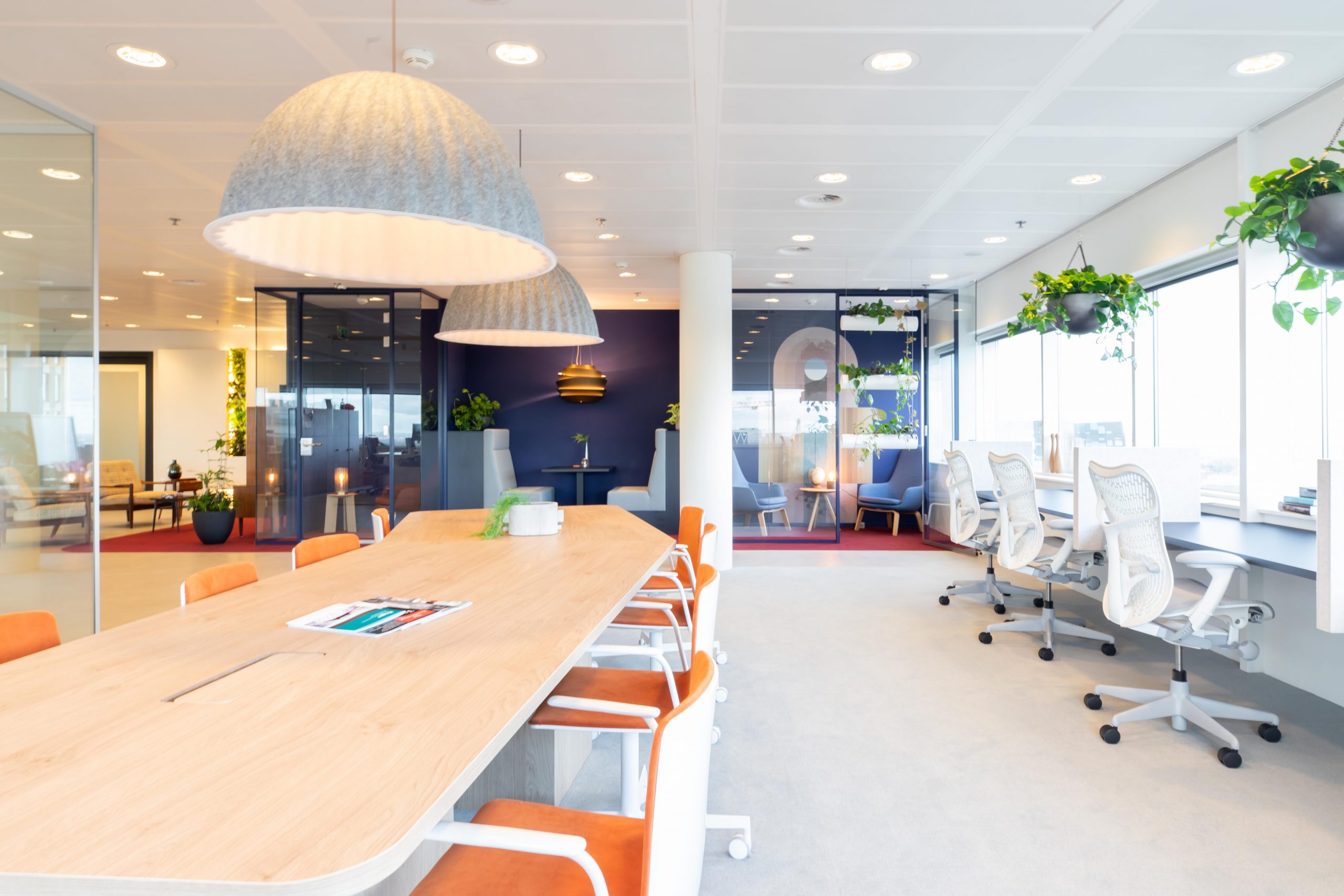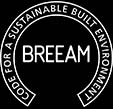As an employer, you want your employees to feel comfortable in the office and be able to perform their tasks effectively. A modern office is designed precisely with this in mind and aligns with our promise: Great Offices, Happy People. But how do you ensure that the office is indeed a pleasant working environment? First, read the key insights about modern offices here, and then check out our tips for designing one.
What is a modern office?
The term ‘modern office’ refers to a workspace that is primarily focused on the people who work there and clearly reflects the company culture. This is in contrast to old-fashioned offices, which mainly followed the form of the space and seemed to exist primarily for maximum efficiency. Think of a space filled with partitioned desks, the so-called ‘cubicles’ often seen in American films.
A modern office is flexible and provides space for various activities: focused work at the computer, meetings with large groups, and one-on-one communication in a relatively informal setting. Efficient work is no longer the only thing that matters; creativity, collaboration, and personal development are also important.
6 Tips for Designing a Modern Office
Tip 1: Ensure Plenty of Variety
As briefly mentioned above, a modern office should facilitate different types of work. Think of tasks that require a lot of focus, such as administrative work or writing an important report. But creative brainstorming sessions or a performance review also take place in the office. Each of these activities requires a different type of space. Therefore, ensure there is plenty of variety in meeting and workspaces.
Tip 2: Use Natural Materials and Plants
Tip 2: Use Natural Materials and Plants
We live in a world that is increasingly fast-paced and digital. As a result, people often seek out nature and the outdoors in their free time. By incorporating natural materials into the office space, you bring a touch of nature indoors. This is also referred to by the fancy term… biophilic design or biophilic designing genoemd
Unpainted wood is an example of a natural material commonly used in many offices. Other examples include large plants, natural stone floors, and moss walls.
Tip 3: Opt for Openness and Promote Transparent Work
In many companies, transparency and a flat organizational structure are high on the agenda. The best way to achieve this is by ensuring openness in the office as well. For example, is it really necessary for every manager to have their own office? Often, they can work just as well in the same space as the colleagues they manage, which lowers the barrier for contact. An open office space encourages collaboration and discussion.
Tip 4: Natural Light (and Glass Walls)
There is no better workspace than a light, calm environment. Research shows that natural light is better for this than artificial light. Of course, during the Dutch winter, artificial light is also necessary, but ideally, it should always complement the sufficient natural light during the day.
Glass partitions are valuable for modern offices that aim to maximize natural light while also creating a more open workspace. They are an excellent alternative to solid walls and doors when it comes to dividing an office and creating separate spaces for meetings.
Tip 5: Opt for Ergonomic Sit-Stand Desks
“It’s often said that sitting is ‘the new smoking.’ While this might be somewhat exaggerated, it’s certainly true that alternating between standing and sitting is better than…” …sitting all day..
Om medewerkers hierbij te helpen, is het daarom aan te raden voor zit-sta bureaus te kiezen.
Deze ergonomische kantoorinrichting past bij het idee van een modern kantoor, dat gericht is op een prettige ervaring voor de mensen die er werken.
Sowieso zijn moderne kantoormeubelen essentieel voor de uitstraling van je kantoor.
Tip 6: Brand Colors and Brand Experience
The sixth tip already! Your office is, of course, not only visited by employees. Clients, suppliers, job applicants, and other stakeholders also come by. That’s why it’s important to consider the branding …appearance of your office. You can do this by giving your logo a prominent place in the office, incorporating your brand colors on the walls, and displaying any products in showcases.





